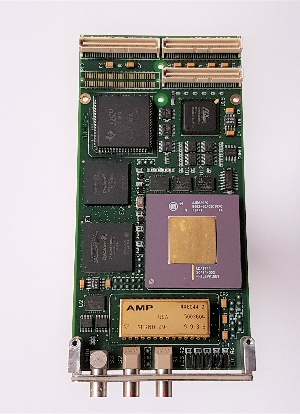The Sy629PMC-BPT card provides a convenient means for transmitting and receiving data over an ARINC 629 bus in accordance with the transmit and receive programme defined by data written into the XPP and RPP memory. In particular, this product can emulate up to 120 terminals transmitting on an ARINC-629 data bus whilst correctly maintaining the Basic Protocol.
The use of the recognised DATAC chip ensures full compliance with ARINC 629 specification with Basic Protocol (BP).
ARINC-629 Input/Output is via a connector on the PMC module faceplate. Two further connectors on the faceplate provide Arinc-629 Pseudo-Bus connection and external power for the ARINC-629 SIM and stub cable.
The module provides configuration registers which allow the host to:
- Automatically identify the module and its revision status.
- Identify connector cables connected to the module.
- Assign address space for the module’s data buffer memory and registers. (Plug-in and Play).
- Control and monitor the PCI bus interface to the module.
- Read module interrupt configuration as assigned by the POST software as it initialises and configures the system.
Additional features designed into the module are:
- 16 Independent Cyclic-Data-Buffers, each with a capacity for 4k x 32-bit words.
- Direct access to the Cyclic-Data-Buffer Read / Write Pointers.
- High resolution time-stamping of received data.
- PCI interrupts on Module Events.
- Direct access to Module registers and application memory.
- Interface compatible with 32bit PCI Local bus Specification, revision 2.1, June 1995.
The PMC module is designed to be used in a "Plug-in and Play" environment which is made possible, not only by the choice of PCI interface, but also by the provision of various identification and module present registers. These include:
- Device ID
- Vendor ID
- Subsystem ID
- Subsystem Vendor ID
- Connector ID / Present
- Module ID
Using these registers the host can detect the presence of the module and its connector, determine if this is consistent with system requirements and respond accordingly by configuring the system or reporting system deficiencies.





 Multi-Terminal Emulator
Multi-Terminal Emulator
